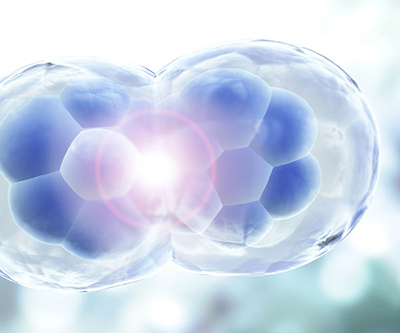
Artistic representation of an early embryo dividing into more cells.
Credit: Stock image
The protein p53 is considered the “guardian of the genome” because it prevents cells with DNA damage from proliferating, therefore reducing the likelihood of tumor development. However, scientists have conflicting ideas about the role of p53 in development. For instance, mice that lack p53 can develop normally from embryo to adulthood before they go on to develop cancer. Nevertheless, there is general consensus that p53 is required for embryonic stem cells to undergo a death process called apoptosis.
A recent paper from the DePamphilis Lab provides an excellent summary of how p53 acquires its functions throughout development. According to the authors, p53 is neither required for cell cycle arrest nor apoptosis in early embryonic stages. Therefore, in a process independent of p53, abnormal early embryos do not survive prior to implantation, which helps promote implantation of healthy embryos.
p53 appears to regulate a number of important cellular functions, such as DNA repair, apoptosis, metabolism, autophagy (a type of cellular recycling), and more. In early embryonic development, mouse models suggest that p53 helps facilitate genomic stability and differentiation of cells. The authors argue that p53 does not begin its role as “guardian of the genome” until gastrulation, and this role continues through adulthood.
 BACK TO TOP
BACK TO TOP